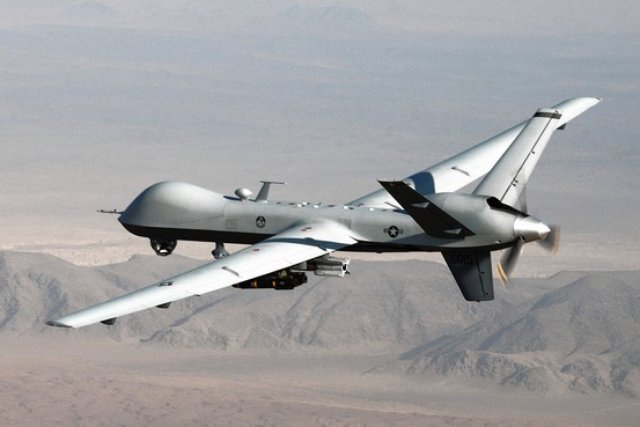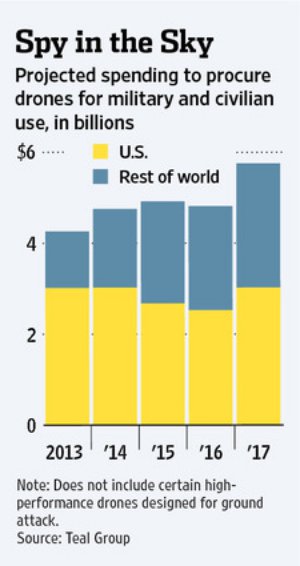 The Obama administration plans to arm Italy’s fleet of Reaper unmanned aircraft, a move that could open the door for sales of advanced hunter-killer UAS technology to other allies, according to lawmakers and others familiar with the matter.
The Obama administration plans to arm Italy’s fleet of Reaper unmanned aircraft, a move that could open the door for sales of advanced hunter-killer UAS technology to other allies, according to lawmakers and others familiar with the matter.
The sale would make Italy the first foreign country besides Great Britain to fly American UAS armed with missiles and laser-guided bombs. U.S. officials said that Italy intends initially to deploy the armed aircraft in Afghanistan.
Lawmakers who question the planned deal say the decision to “weaponize” Italy’s unarmed unmanned surveillance aircraft could make it harder for the U.S. to deny similar capabilities to other North Atlantic Treaty Organization allies, and set back efforts to urge sales limitations on other nations that make sophisticated UAS such as Israel.
Advocates say such sales would enable trusted allies to conduct military missions on their own as well as help open markets for American UAS manufacturers.
The administration sent a confidential “pre-notification” to congressional panels in April detailing its plan to sell kits to Italy to arm up to six Reapers.
The administration gave Congress a longer-than-usual 40 days to review the proposed sale. The period ended May 27 without a move to block the sale, according to congressional officials, clearing the way for the deal to move forward and for a formal notification of Congress as soon as this week.
Congress still could block the sale if it passes a joint resolution of disapproval in both the House and the Senate within 15 calendar days, though several members of Congress from both parties say such a move is unlikely.
Though Italy would initially use armed UAS to protect its nearly 4,000 troops in Afghanistan, U.S. officials indicated they might be used elsewhere in the future. The administration could negotiate “end-use requirements” to limit how the armed Reapers can be used, but it hasn’t told Congress what those might be.
 The world procurement market for unmanned aircraft, both military and civilian, is expected to rise to $5.8 billion in 2017 from a projected $4.3 billion next year, according to Teal Group, a market-analysis firm. The figures include Reapers and Predators but not a new generation of UAS specifically designed as combat aircraft.
The world procurement market for unmanned aircraft, both military and civilian, is expected to rise to $5.8 billion in 2017 from a projected $4.3 billion next year, according to Teal Group, a market-analysis firm. The figures include Reapers and Predators but not a new generation of UAS specifically designed as combat aircraft.
NATO member Turkey also wants to buy armed Reapers—for use against Kurdish separatist fighters—and the Obama administration supports Turkey’s request. Lawmakers have objected, citing tensions between Ankara and Israel, so far preventing the administration from sending such a proposal to Congress for review. Some current and former U.S. officials question the standards used by Turkey in selecting targets for strikes, pointing to a strike by Turkish warplanes in December that killed 34 civilians after a U.S. Predator provided surveillance footage to the Turkish military.
Officials said it would take at least a year to complete the upgrade of Italy’s Reapers and train Italian pilots to use the sophisticated weapons and targeting systems.
The kits would allow the Reapers to carry and fire Hellfire missiles, laser-guided bombs and larger munitions used to take out more deeply buried targets, according to officials briefed on the package.
Photo: An Air Force MQ-9 Reaper armed with laser-guided munitions and Hellfire missiles. Credit: US Air Force / Associated Press
Source: The Washington Post
